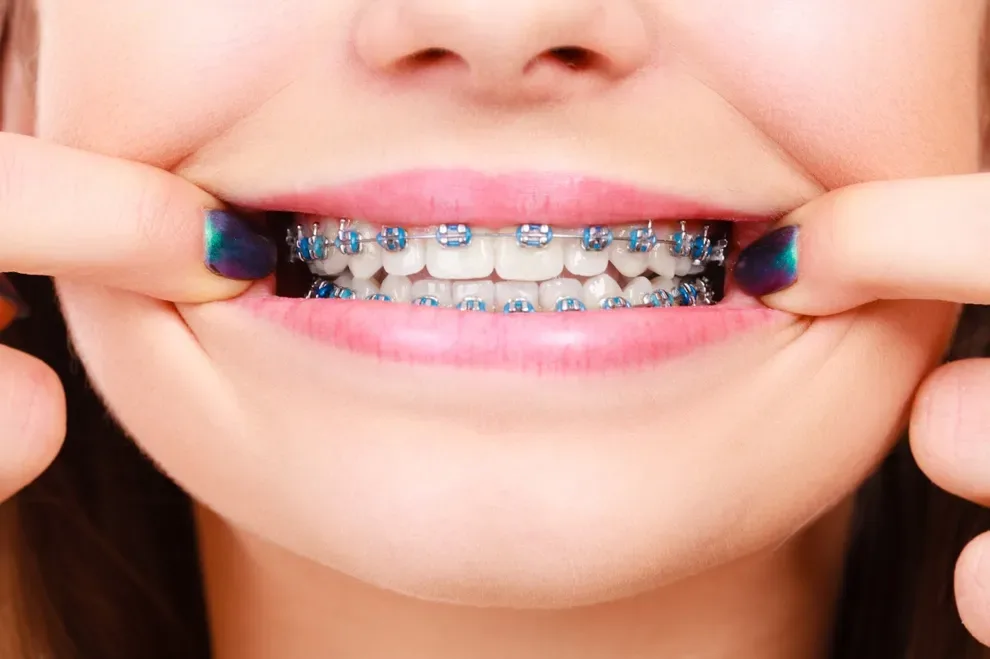Braces Colors: What the Options Are & How to Choose

Table of Contents
- Best Elastic Color Option
- Alternative Options
- Elastic Teeth Movement
Why did you choose to get braces? If you're like most people, aesthetics drove your decision. You wanted your smile to look as beautiful as possible.
Unfortunately, braces aren't appealing to many people. A mouth filled with metal can look robotic rather than human. And you might find that all the gleaming hardware prompts people to use awkward nicknames like "metal mouth" when talking about you.
It's almost impossible to eliminate all the metal from your braces. Even if you choose clear or ceramic brackets, the wires that connect them are sometimes shiny and bright with metal.
But your doctor might use elastics during your braces treatment. If so, you could add a bit of color and flair to your smile. For some people, that added dash of fashion is just enough to lower the impact of metal and make their treatment bearable.
While your braces will probably be silvery with metal, you'll have plenty of elastic items that can be as colorful as you'd like
What Color Is Best for Your Elastics?
Bands come in almost every color you can think of. In fact, your orthodontist might show you a wheel of colors that looks a lot like something you'd see inside the paint department at the hardware store.
Researchers say that both men and women often choose blue as their favorite color. If you have a hue that calls to you, chances are, your orthodontist can apply it to your teeth.
But if you don't have a favorite color, think about:
Your diet. Do you drink a lot of coffee and tea? Are blueberries and pomegranates your favorite fruits? Light-colored bands can pick up stains from the items you eat and drink. A darker color might be better for you.
Your tooth color. Are your teeth gleaming white? Or are they closer to yellow? Choose yellow bands, and your teeth will look even more discolored. And bright, white bands can make your teeth look darker too.
Your skin coloring. Bright colors look great in people with darker skin. If you're fair, a warm color might be better for you.
Upcoming events. Dress up your smile with holiday colors. Or pick out a hue that works well with an outfit you're wearing to a wedding or important dance.
Lifestyle issues. You might love brown and green. But food often takes on these colors, and your bands can look like items trapped in your teeth.
You're not stuck with the same color throughout your treatment journey. Each time you visit your orthodontist, you'll get new bands. So experiment, and choose a different color each time to spice up your smile.
What Else Can You Try?
Add color to your braces with bands, and your smile is bound to get noticed. For some people, that's a problem.
You may want a brighter, better smile. But you may not want people to notice and comment on all of your hard work. If you're a private or sensitive person, adding color can add to your embarrassment, not reduce it.
Aligners can also move your teeth, and studies suggest that people think clear aligners are more attractive than braces. People who look closely at your mouth may see your trays. But you won't call attention to them with garish colors and plenty of metal. They'll just be there, quietly working on your perfect smile.
How Does Elastic Move Your Teeth?
If you're surprised at the idea of using latex with your braces, you're not alone. Many people had no idea that their path to a perfect smile might involve something loose and rubbery.
Your orthodontist might use one or all three of these elastic forms during your treatment plan:
Ligatures: Brackets affixed to the front of your teeth have a gap just wide enough for a tiny band. Wires connect all of your brackets, and that band keeps the wire in place. You can't remove these bands at home, but each time you visit your doctor, you'll get a new set.
Rubber bands: A few of your brackets are customized with hooks for larger bands. Your doctor might stretch some from your upper jaws to the lower to pull your bite into alignment. You can take these bands off to eat and brush, but they should stay on throughout most of your day.
Power chains: If your smile is marred by several gaps (including those caused by pulled or missing teeth), your orthodontist might use long, twisted sets of rubber bands called power chains to add to the pulling power and close up the space.
If you have all of these bands filling your mouth at once, people may see very little metal when you smile. Researchers say most people like braces with very little metal. The more we can see, the more uncomfortable we are.
But some people don't need all of these elastic types. You might need just one or two bands on your journey to the smile you always wanted.
